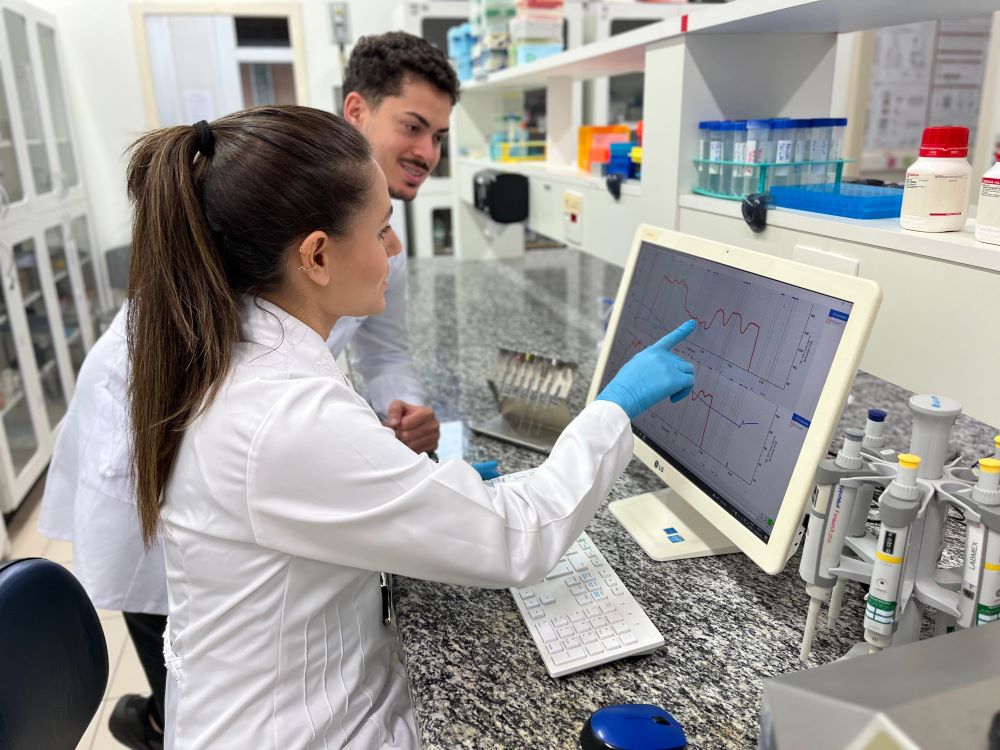Excessive exercise, especially without proper rest, can cause various damage to the human organism. In more severe cases, this picture can evolve into the so -called syndrome of overtraining characterized by loss of performance and appetite, chronic fatigue, muscle pain, increased lesions, changes in the immune system and metabolism.
Study published in the magazine Molecular metabolism It points to the excess expression of a protein such as the causing of the syndrome.
A group led by researchers from the Faculty of Applied Sciences at the State University of Campinas (FCA-UNICAMP) in Limeira showed that mice undergoing excessive training had loss of performance, fatigue and even behavioral symptoms (eg, inactivity under stress and more self-cleaning behaviors), while excessively expressed parp1 protein in skeletal muscles.

“Protein is activated when there is some stress in the body, preventing cell death, and was well described as increased in skeletal muscle in obesity condition and muscle dystrophies. We confirm that its hyperactivity is related to muscle damage caused by excessive exercise,” explains Barbara Crisol, who performed work as part of her doctorate in FCA-Unicamp with FapeSP scholarship.
The study integrates project Coordinated by Eduardo Ropelle, professor at FCA-Unicamp.
There is no specific treatment for overtraining In addition to partial or total suspension of training for weeks or even months. Although it may be especially harmful in the career of professional athletes, symptoms also affect non -athletes.
In the study, the researchers observed that mice treated with a drug that inhibits Parp1 activity did not have a drop in performance and other symptoms of overtraining after performing an excessive physical exercise protocol.
In breast and ovary tumors, the drug used in the study, called Olaparibe, inhibits Parp1 activity and thus facilitates the death of carcinogenic cells. In animals, the drug has avoided protein hyperactive in the muscle, avoiding the overtraining.
“For the first time a pharmacological agent was able to prevent the overtraining. This was one of the great advances of the study. However, it must be made clear that this is not a drug that serves for this purpose, as it has several side effects, including suppressing the immune system, ”warns Ropelle.
Researchers seek some natural compound that can reduce parp1 production in the muscle and thus prevent or treat the overtraining.
Humans
Besides the mice analyzes, which performed an experimental model of overtraining In Limeira, another part of the study was conducted with humans at the Swedish School of Sport and Health Sciences in Stockholm. There, researchers submitted a group of healthy volunteers to a three -week high -intensity interval training routine (HIIT).
Researchers increased the number of training sessions over the weeks while reducing the time for recovery between them. The idea was to mimic an excess training condition. Volunteer muscle biopsies were then analyzed.

“ overtraining In humans, because it would not be ethical to induce the condition in people. Therefore, this protocol approaches what may be happening in the muscle of people who have performed excess training, ”says Crisol, currently performing postdoctoral in the center of Receherche En Myologie in France, dedicated to the study of muscle conditions.
The analyzes pointed out that exercise protocol reduced glucose tolerance, mitochondrial function (related to cell energy production) and physical performance at the end of the third week of training.
These results were published first by the European group in the magazine Cell Metabolism.
In his own analysis of the data, which he performed with the support of FAPESP during an internship at the Swedish institution, Crisol noted that excessive exercise in healthy individuals increased the so -called phenomenon due to parp1 activity in cells.
The finding is compatible with a series of discoveries that have been made on the relationship of protein with muscle conditions. High levels of parp1 were found, for example, in the muscle of people with Duchenne muscular dystrophy, a genetic disease that affects mainly children.
Protein is also related to obesity and cachexia, the latter a syndrome that causes muscle loss in cancer treatment patients. High levels of parp1 were still found in sepsis. The search for compounds that may inhibit protein without side effects, so it can be beneficial for treating different conditions.
“THE overtraining In itself it weakens the person, including psychologically. In mice, we have seen that the expression or not of protein makes a difference even in this respect. Preventing or softening the effects with some compound would be quite beneficial, ”says Ropelle.
The work was also supported by FAPESP through three other projects (13/07607-8, 21/08354-2 and 22/08930-6).
The article Excessive Exercise Elicits Poly (ADP-Ribose) Polymerase-1 Activation and Global Protein Prylation Driving Muscle Dysfunction and Performance Impairment can be read in: www.sciencedirect.com/science/article/pii/s2212877825000420 .
Practicing physical activity helps control the appetite, says study
This content was originally published in Overtraining: Understand what happens when we train too much on CNN Brazil.
Source: CNN Brasil
I am an experienced journalist and writer with a career in the news industry. My focus is on covering Top News stories for World Stock Market, where I provide comprehensive analysis and commentary on markets around the world. I have expertise in writing both long-form articles and shorter pieces that deliver timely, relevant updates to readers.







